Ramsgate Harbour & Dunkirk 80th anniversary
03/06/2020 | Lawrence Northall
Ramsgate Harbour & Operation Dynamo
26th May - 4th June this year represents the 80th anniversary of Operation Dynamo & how its remarkable events unfolded over ten days in 1940. From the seemingly hopeless position of the British Expeditionary Force to the hastily assembled fleet of requisitioned civilian vessels & eventual "miracle of Dunkirk". The operation saw an anticipated evacuation of 40,000 troops transform into the successful return of almost 350,000 boosting morale & galvanising a national spirit of hope & resistance at the time. The story still evokes strong emotions today & has become an important cultural reference of national identity. This year, however, the COVID crisis has prevented gatherings & events organised to celebrate Dunkirk 80, such as those in Ramsgate which will be marking Dunkirk 80+1 next year instead. This particular celebration has been taking place since 1965, reflecting the importance of Ramsgate’s role in the operation.
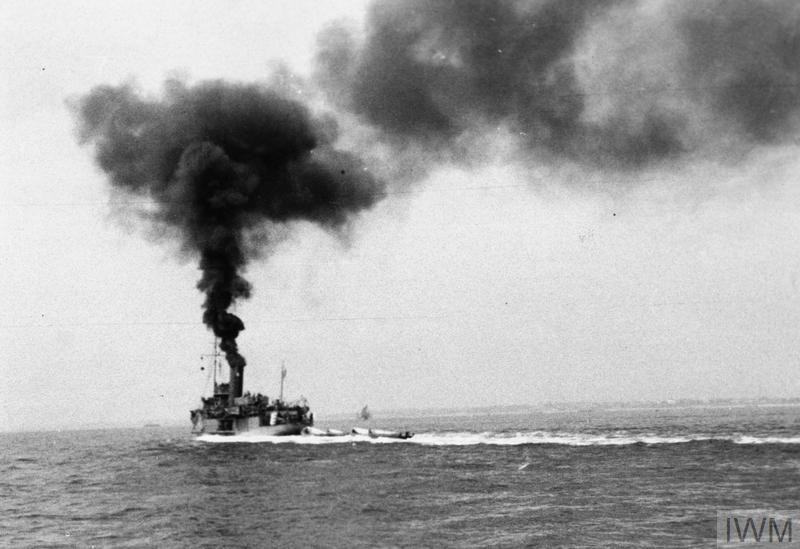
Paddle steamer towing rescue vessels, Dunkirk 1940 © IWM HU 104605
The reason for Ramsgate’s importance was simple, it’s a major harbour town on a peninsular less than 30 miles from mainland France. This along with its good marine facilities & train links made it a prime assembly point for fleets of Little Ships to depart from before they embarked on one of three mine swept routes. It’s said that over the course of the operation there was an almost constant stream of traffic coming in and out of the harbour. The Little Ships that came back in would disembark troops they had rescued, though many spent days ferrying troops from the shallows to larger ships before returning, particularly after the impairment of the mole (which had acted as a makeshift pier into deeper water). In total almost 80,000 troops disembarked at Ramsgate & a third of all Dunkirk survivors were rescued by Little Ships in one form or another. During the COVID crisis CITiZAN has been creating virtual Low Tide Trails to supplement the guided walks we would normally run on location & the trail for Ramsgate is being posted in celebration of the Dunkirk anniversary. Seen below it includes two Dunkirk Little Ships, the role the Ramsgate RNLI & its lifeboat Prudential played in the evacuations as well as Ramsgate’s wider WW2 heritage.
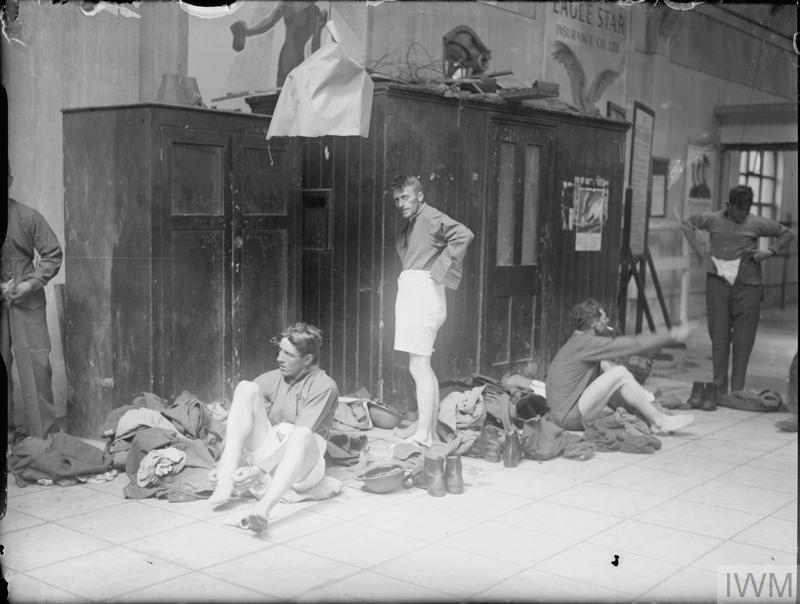
Survivors of Dunkirk after their arrival in Kent © IWM H 1646
Ramsgate’s role in WW2 was already a significant one by the time Operation Dynamo brought it to the fore, a significance that persisted throughout the war & for the same strategic reasons. For instance HMS Fervent,a significant Naval shore base that operated Motor Torpedo Boats, Motor Launches & Motor Gun Boats out of the harbour, was housed in waterfront buildings like the Royal Temple Yacht Club & on the site of the Merrie England amusement attraction. The town was protected by a network of defences & some buildings, like Edward Pugin’s Hotel Granville, were turned into major hospitals. There were defensive gun installations around the town, a 6” battery in Wellington Crescent & a 12lb quick firing gun at the end of the northern pier arm for targeting Schnellboots (fast moving surface vessels instrumental to German minelaying). Bombing of Ramsgate was also heavy at times & half of the population was evacuated; those that remained were sometimes forced to shelter in the under cliff tunnels & on the 24th August 1940, 500 bombs were dropped on the town in just 5 minutes. What’s more RAF Manston, which played an important role in The Channel Dash, The Battle of Britain & Operation Market Garden lay just outside the town - it was bombed to almost destruction in 1940.
Sundowner, Lazy Days & the Ramsgate RNLI in Operation Dynamo.
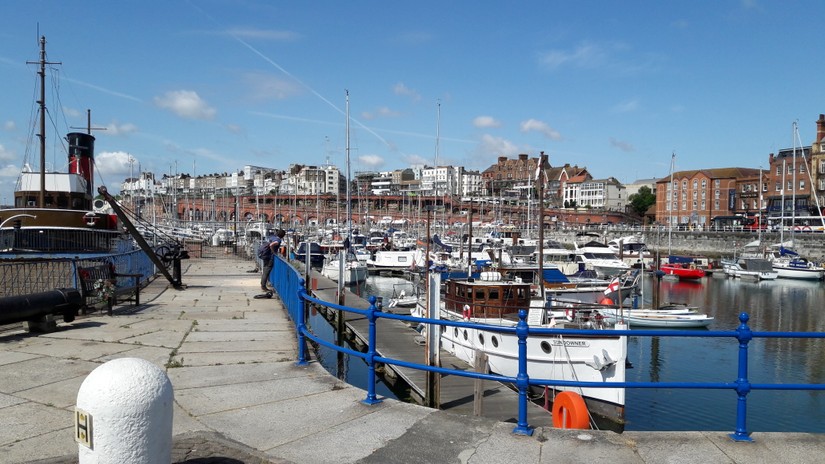
Sundowner in Ramsgate Harbour (CITiZAN)
Sundowner now moored in Ramsgate Harbour was originally a harbour launch, built in Sheerness in 1912. Little is known about its early life or activities during the First World War. What is clear though is that the vessel was in a state of disrepair when Commander & Syliva Lightoller found it laid up in Conyer Creek in the early 1930’s. They had been looking for a project boat like this to convert into a ketch rigged sailing yacht for leisure & family holidays. Commander Lightoller was already famous at this time, starting out as an apprentice on a barque in Liverpool docks by 14 he had already survived his first shipwreck in the Indian Ocean & became well known for his accounts of the Titanic disaster, as the most senior surviving officer. After its successful conversion & renaming to the Australian slang word for a hobo Sundowner by Syvlia (herself Australian) they holidayed in the vessel, often in the Baltic & at least once through a fierce & dangerous storm. The Lightoller’s knowledge of the Baltic seaways caught the attention of the Admiralty in 1939 & the couple were recruited with their yacht for an espionage mission in the East Frisian Islands. Here they posed as holidaymakers for two weeks while secretly surveying & recording the German coastline, they successfully returned undetected. The following year Sundowner was requisitioned by the Admiralty for use as an appropriate Little Ship in Operation Dynamo. Lightoller refused to allow the boat to go under anyone else’s command & captained it himself with only his youngest son & a seascout for crew - ironically an older son of his was one of the troops stranded on the beaches they were headed to. It left in a convoy of five boats & provided a passage home to 130 British soldiers, apparently the troops were relieved but darkly amused when they realised who their famous captain was.
Commander Lightoller recalling the Titanic disaster
Lazy Days is another Dunkirk Little Ship moored in Ramsgate Harbour. It’s thought the boat may have served HMS Wildfire, a Naval shorebase at Sheerness, &prior to Dunkirk it probably assisted in activities such as minesweeping. It sustained fierce aerial attack whilst ferrying troops to larger deeper bottomed vessels off East Beach & sustained evacuations for three whole days. When it finally returned it had three ribs broken beneath the waterline. Later in the war it served as a coastal patrol boat & rescued pilots who had ditched their aircraft in the sea, including at least one Spitfire & a Walrus Seaplane.
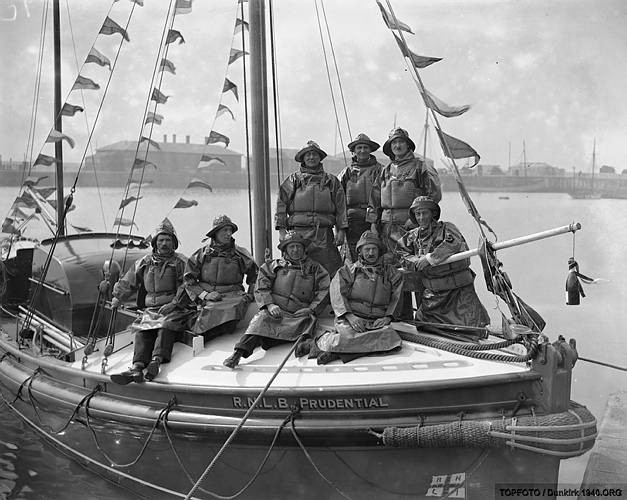
Ramsgate RNLI lifeboat Prudential & the crew that took her to Dunkirk. (Image Source - dunkirk1940.org)
Ramsgate RNLI already had a proud history before its participation in Operation Dynamo. A busy station due to the nearby & treacherous Goodwin Sands (which have over 2,000 recorded wrecks) in 1881 its most famous rescue of the Indian Chief took place. A 1,238 ton barque on passage from Middlesborough to Yokahama, it got into trouble in a fierce storm & sent out distress signals. The Tug Vulcan & lifeboat Bradford, set out from Ramsgate & unable to locate the ship made the brave decision to stay overnight in tempestuous seas. They found only eleven survivors the next morning strapped to the last remaining of the masts & embarked on returning them to Ramsgate. The captain of the ship had drowned & his brother Howard Primrose died in the returning lifeboat. In his memory the coxswain of the Bradford’s grandson was named Howard Primrose Knight, this Howard Primrose lived to be the coxswain of the Lifeboat Prudential when it left the station for Dunkirk. The crew were given gas masks & helmets & set out on the 30th May towing eight wherries filled with supplies. They spent an exhausting 30 hours ferrying troops off the beach at La Panne to larger vessels & were responsible for the transfer & rescue of approximately 2,800 men. Within 24 hours of returning safely to Ramsgate the crew was called out once more to the Goodwin Sands. Knight was awarded a Distinguished Service Medal for his participation in the operation.
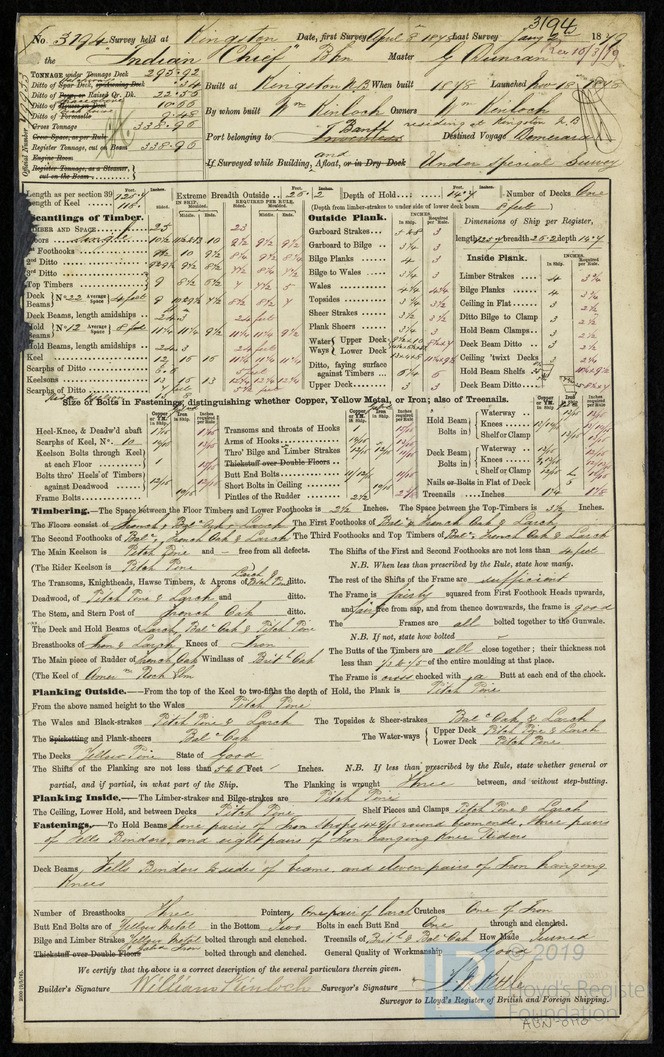
Survey report for the Indian Chief two years before it was wrecked. Source from Lloyd Register Foundation online catalogue. For more digital resources please see their digital Heritage & Education Centre.
While Sundowner, Lazy Days & the RNLI can be seen in the harbour today, many other Little Ships owe their passage & safe return to Ramsgate & famous Little Ships such as the Medway Queen or “heroine of Dunkirk” (which brought back more than 7,000 troops over 7 days & shot down three enemy aircraft) return when the celebrations are held. CITiZAN hope to hold guided walks of the harbour when the delayed festivities commence in May next year but in the meantime please see the virtual trail below for more information on Ramsgate’s rich harbour history & heritage.








